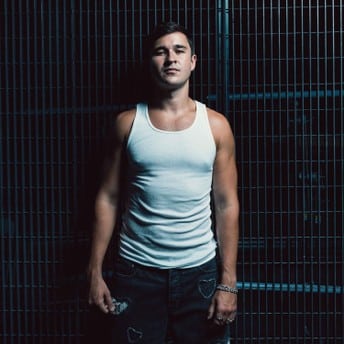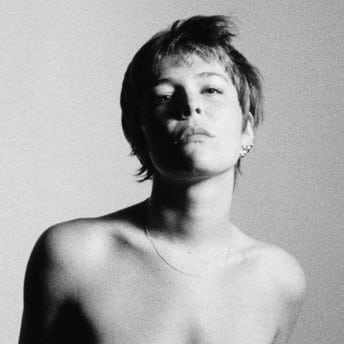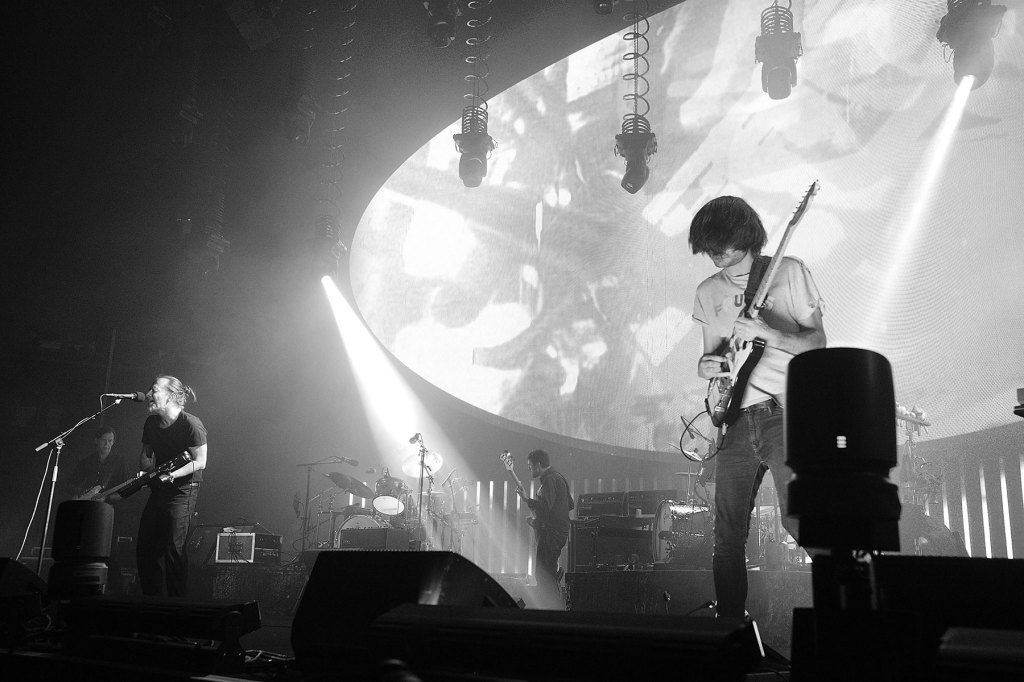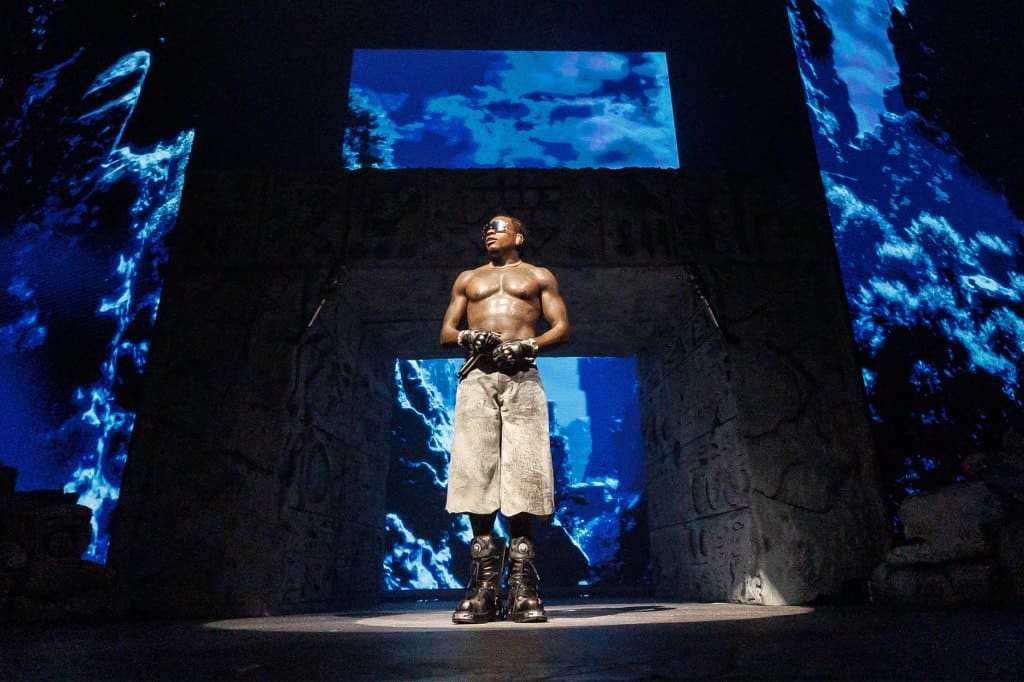Concerts

Trending on Billboard
Skrillex will help kick off next year’s Bonnaroo Music & Arts Festival on June 11 on a roster that will also include Four Tet, Vince Staples and Spiritual Cramp, launching the four-day (June 11-14) gathering of the vibes in Manchester, Tenn. on the 700-acre ‘Roo Farm.
Explore
See latest videos, charts and news
Friday night’s roster will be topped by The Strokes, Griz and Turnstile and also include sets from Mt. Joy, Major Lazer, Jessie Murph, Yungblud, Geese, Cloonee, Lil Jon, Blood Orange, Wet Leg, Hot Mulligan, The Dare, Wolfmother and others.
Saturday night will be toplined by Rüfüs Du Sol, who will be joined by Teddy Swims, The Neighbourhood, Alabama Shakes, Chase & Status, Sara Landry, Rainbow Kitten Surprise, Freddie Gibbs & Alchemist, Amyl and the Sniffers, Sub Focus, Gorgon City, Flipturn, Passion Pit and more.
Sunday’s packed lineup will spotlight Noah Kahan, Role Model and Kesha, with support from Tedeschi Trucks Band, Lszee, Clipse, Mariah the Scientist, Daily Bread, Modest Mouse, Big Gigantic, Japanese Breakfast, Turnover, San Holo, Del Water Gap and more. Kesha will also curate a SuperJam, “Kesha Presents: Superjam Esoterica: The Alchemy of Pop” while beloved parody song master “Weird Al” Yankovic will perform a special late-night Saturday set, “Bigger & Weirder Saturday Late Night Roovue.”
The acts will perform around the clock on 10 stages, with tickets going on sale on Friday (Dec. 5) at 10 a.m. CT here. According to a release announcing the lineup next year’s ‘Roo will feature significant upgrades to the facilities, including improved drainage, miles of new roadways and 135 acres of new turf.
The upgrades come after last year’s event was canceled on Friday due to severe weather that wound up flooding campgrounds after kicking off the night before with sets from Luke Combs, Dom Dolla, Insane Clown Posse and Rebecca Black. Friday night’s headliners were scheduled to include Tyler, The Creator, John Summit and Glass Animals; Saturday’s lineup was topped by Olivia Rodrigo, Avril Lavigne and Justice; and Sunday would have wrapped up with Hozier, Vampire Weekend and Queens of the Stone Age.
Check out the full 2026 Bonnaroo lineup below.
Trending on Billboard
LIV Golf Adelaide has locked in global DJ and producer John Summit as the Saturday headliner for its 2026 tournament, adding another major name to the event’s expanding live music program.
Explore
See latest videos, charts and news
Summit will perform Feb. 14 at 7 p.m. following round three at The Grange Golf Club. The Miami-based artist — who has earned two No. 1 hits on the U.S. Dance Radio chart and multiple Top 10 entries on Billboard’s Hot Dance/Electronic Songs chart — brings his explosive live show to Australia for one of his few local appearances next year. His set is expected to feature fan favorites including “Where You Are” and “Shiver.”
The announcement rounds out a four-day entertainment lineup that already includes Peking Duk, Royel Otis and FISHER. Canberra duo Peking Duk will kick off the music program on Thursday, Feb. 12, performing directly after the opening round with a set that includes their breakout hits “High” and “Stranger,” along with new material. Royel Otis headlines Friday, while FISHER returns Sunday to close out the tournament.
All concerts are included in daily Grounds Pass and hospitality tickets, meaning fans attending Thursday and Saturday events will automatically have access to the live performances. Limited tickets remain available at LIVGolf.com, including Grounds Plus and select premium hospitality packages in the Barossa, Birdie Shack and Ripper Point areas.
For the first time, Summit’s Saturday set will also be streamed internationally on the LIV Golf YouTube channel, part of the league’s push to expand its global fan base.
“LIV Golf is known for bringing world-class DJs and musicians to Adelaide, and we are ecstatic to welcome John Summit this February,” said Ross Hallett, LIV Golf’s executive vice president and head of events. “His high-energy performances perfectly complement the vibe of LIV Golf.”
South Australian premier Peter Malinauskas added that hosting Summit “sets a new benchmark” for the state’s live entertainment offerings, noting that three of the four headlining acts next year are home-grown Australian artists.
Since launching in 2022, LIV Golf has woven live music into the fabric of its tournament experience, hosting more than 30 concerts in 2025 alone — a number expected to climb to 40 in 2026.
Limp Bizkit is honoring their late co-founder and bassist Sam Rivers.
During their first concert since Rivers’ passing in mid-October, the Fred Durst–fronted rap-rock band paid tribute to the musician with an emotional video at Mexico City’s Estadio Fray Nano on Saturday (Nov. 29).
The brief clip featured an image of Rivers accompanied by the messages “Sam Rivers, our brother forever” and “Sam Rivers, we love you forever.” As the video ended, the members of Limp Bizkit embraced one another while the crowd chanted the late bassist’s name.
Earlier in the day, drummer John Otto reflected on the loss of his close friend and bandmate in a heartfelt Instagram post.
“Today is going to be tough,” Otto wrote. “A first I never wanted to experience. Especially not now. You’ve been there for so many major firsts in my life. Some of my earliest memories were made with you. We grew up together. Laughed together. Realized our dreams together. And traveled the world together.”
He continued, “You’ve always been there. The godfather to my girls, my best friend – my brother. There will never be another you. We’re going to honor the life you lived and the love you spread with every show we play. You’ll always be with us.”
The drummer closed his message with gratitude for the band’s supporters. “Thank you to our fans for all the messages of support and tributes to Sam. It means the world to us. This one’s for you Sammy,” he wrote.
The Mexico City show featured bassist Richie Buxton (aka Kid Not), who also performs with Ecca Vandal, the group supporting Limp Bizkit on their upcoming South American dates.
Rivers passed away on Oct. 18 at age 48. An official cause of death had not been revealed at press time. The musician had been diagnosed with liver disease in 2011 after years of heavy drinking and underwent a liver transplant in 2017, following a temporary departure from the band in 2015. He rejoined Limp Bizkit in 2018.
After Rivers’ death, Durst shared an emotional tribute, calling it “so tragic he’s not here now” and writing that he’d shed “gallons and gallons of tears since yesterday,” adding, “My God, Sam’s a legend. He did it. He lived it.”
The band — also featuring guitarist Wes Borland, DJ Lethal and Otto — issued a joint statement honoring their beloved bandmate as well.
“Sam Rivers wasn’t just our bass player — he was pure magic,” they wrote. “The pulse beneath every song, the calm in the chaos, the soul in the sound. From the first note we ever played together, Sam brought a light and a rhythm that could never be replaced. His talent was effortless, his presence unforgettable, his heart enormous.”
The weather outside may be frightful, but the music will be so delightful this holiday season, as acts of all musical stripes are embarking on Christmas tours sure to bring cheer. Whether you like your yuletide mixed with a little country, R&B, jazz or rock, there is sure to be a tour or two or […]
Trending on Billboard After horrendous weather delayed Tyler, The Creator‘s 11th annual Camp Flog Gnaw music festival, the two-day fest finally returned in all its glory this past weekend. Taking over Dodger Stadium Grounds for a fifth year, the weekend included performances from Childish Gambino, Doechii and of course Tyler himself. Kicking things off was […]
Trending on Billboard
“There’s nowhere else I’d rather be than supporting the work of the ACLU,” Maggie Rogers told the crowd ahead of her set at the American Civil Liberties Union (ACLU)’s Creatives for Freedom benefit concert on Saturday night (Nov. 22).
Explore
See latest videos, charts and news
Held at Pioneer Works in New York’s Red Hook neighborhood in Brooklyn, the event brought together a stacked lineup featuring headliner Sheryl Crow alongside St. Vincent, Mark Ronson, Joy Oladokun, Taylor Meier of CAAMP, Mon Rovîa and more. It marked the ACLU’s first benefit concert of its kind, supporting the organization’s work to protect civil rights and civil liberties. The show, presented by Ben & Jerry’s, Gabriela Hearst and YOLA Mezcal, is part of a broader ACLU initiative to unite leaders across music, fashion, film, comedy and other creative industries to spotlight the critical civil liberties issues defining today’s landscape.
“We’re living through an era of unprecedented attacks on our rights, from attacks on immigrants’ rights, speech, racial justice and LGBTQ communities,” said Nahal Zamani, ACLU’s director of state campaigns, in a statement to Billboard. “All of our voices are crucial right now. What’s more, creative voices have a unique ability to inform new audiences about these urgent issues, inspire people to get involved, and drive social change — which we need now more than ever.”
Arranged and directed by Rob Moose and Cody Fitzgerald, performers took the stage for one or two songs each, often pausing to voice their support for the ACLU and urge young people to get involved.
One standout moment came courtesy of artist Dread Scott, who, before introducing Mon Rovîa, spoke about his seminal 1989 work What is the Proper Way to Display a U.S. Flag. The piece sparked political controversy at the time for inviting viewers to step on the American flag. When Scott later burned the flag on the steps of the U.S. Capital in protest of laws restricting flag desecration, he was arrested — but the Supreme Court ultimately ruled in favor of him and the other protestors, striking down federal flag-desecration laws as unconstitutional. Scott credited the ACLU for helping protect his work and artistic freedom.
“I tell people I make revolutionary art to propel history forward,” he said on stage. “I’m happy to be here supporting the ACLU. They do amazing work, and they have advised and represented me and my art on numerous occasions. They’ve saved my a– and enabled my art to continue to reach its audience.”
In another statement to Billboard, Esha Bhandari, director of the ACLU’s Speech, Privacy and Technology Project, emphasized the longstanding relationship between artists and the civil liberties movement.
“While the ACLU is working in the courts, in legislatures and on the streets, artists are helping shift narratives, broaden understanding, and move people from awareness to sustained action,” she said. “This concert is the latest event in our Creatives for Freedom campaign and we hope to continue building momentum towards change and inspiring more people to join in working for a more equitable and free future.”
Sheryl Crow opened her headlining set performing “Redemption Day,” an anti-war song she wrote in 1996 after a USO trip to Bosnia with Hillary Clinton. She shared onstage that Johnny Cash approached her after he heard the tune in 2003 and later recorded a version of it himself.
“[He] called me and said, ‘I want to know what every single line means,’ so that he could stand behind what he was singing,” Crow told the audience. “He stood against the Vietnam War, he stood up for Native American rights — which was very unpopular at the time. These are the kind of leaders and artists that we want to emulate: people who speak up and want to leave the campground nicer than they found it.”
For the finale, Crow invited the entire lineup back to the stage for a joyous singalong of her 1996 hit “If It Makes You Happy.” With Crow leading the verses, the other artists wrapped their arms around each other, swaying and singing.
“I just want you guys to know that we artists don’t take it lightly that our First Amendment is under attack,” Crow said as the night wrapped. “But these artists right here I have great hope and faith in. They lift me up, they make me want to be a better songwriter and they make me want to be a better person.”
Here’s a look at the full setlist, which was followed by a DJ set from Mark Ronson:
Joy Oladokun“I’d Miss the Birds”“If You Got a Problem”
Taylor Meier“We Will Dance Again”
Mon Rovîa“Crooked the Road”“Heavy Foot”
Andrew Wyatt“Live Free and Be Gone”
Maggie Rogers“Alaska”“Don’t Forget Me”
St. Vincent“…At the Holiday Party”“New York”
Sheryl Crow“Redemption Day”“Strong Enough”“If It Makes You Happy”
British music has had such a banner year in 2025, that Radiohead’s return has flown a touch under the radar. With Olivia Dean, Yungblud, Lola Young and RAYE all conquering the Billboard charts in the U.S., and Oasis putting on the biggest tour of the year, the return of the art-rock fivepiece after an seven-year […]
Trending on Billboard
Zootown Music Festival will return to Missoula, Mont., next summer with a star-packed 2026 lineup and an expanded slate of outdoor activities that highlight the natural beauty surrounding the city. The festival will once again take at the Missoula Fairgrounds June 19 to 20.
Explore
See latest videos, charts and news
This year’s bill features more than 20 artists, including headliners The Lumineers and The Chicks, as well as Tedeschi Trucks Band, Rainbow Kitten Surprise, Trampled By Turtles and The Head and The Heart.
Last year’s inaugural Zootown was widely embraced by locals and travelers, praised for its scenic setting in the valley where the Clark Fork, Blackfoot and Bitterroot rivers meet. That backdrop becomes even more integral in 2026 thanks to a renewed partnership with GuideTime, which will again offer half-day and full-day excursions before, after and during festival weekend.
More than 60% of the 2026 lineup will be performing in Montana for the first time. While The Chicks have played in the state, they haven’t done so in more than two decades. Montana holds a special place in the band’s history: “Wide Open Spaces,” which peaked at No. 41 on the Billboard Hot 100, was written by songwriter Susan Gibson while she was attending the University of Montana’s forestry school.
Pre-sale tickets for one-day and two-day passes go live Friday, Nov. 21, at 10 a.m. MT via the festival’s website, and are available to fans who attended the inaugural event or who are signed up for SMS updates. General onsale begins the same day at 1 p.m. MT.
According to a study by Zenith Economics, last year’s festival generated $9.1 million in net new economic activity within Missoula County, more than $400,000 in tax revenues for state and local governments and $3.3 million in new labor income. In total, Zootown supported the equivalent of 67 full-time jobs across the region.
See the festival’s lineup below:
Zootown
Courtesy
Trending on Billboard End of The Road festival in Dorset, England announced the first list of acts on tap to celebrate its 20th anniversary edition in 2026 on Thursday (Nov. 20), with Pulp, CMAT and Mac DeMarco set to headline. The festival will take place at Lamar Tree Garden on Sep. 3-6 and feature a […]
Trending on Billboard Gunna kicked off his Wun World Tour on Monday in Boston, with the raucous crowd filling MGM Music Hall being treated to a loaded 36-track setlist spanning the Atlanta native’s wide-ranging discography. From “Cfwm” to “Pushin P,” “Drip too Hard” and “Fukumean,” Gunna kept the party going next to Fenway Park with […]

 State Champ Radio
State Champ Radio 






